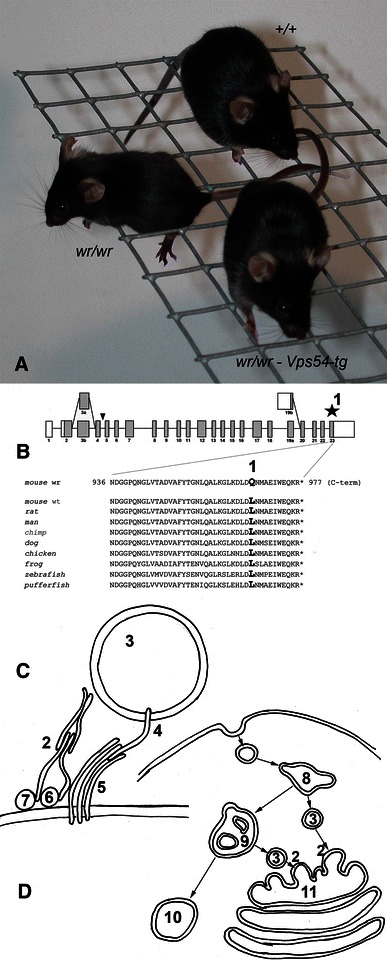Fig. 1.

The wobbler phenotype is caused by to the partial loss of GARP function. a Wild type- (+/+), wobbler mouse (wr/wr) with motor deficits, and a transgenic rescued mouse (wr/wr–Vps54) with a wild-type Vps54 transgene compensating the motor defect (Schmitt-John et al. 2005). b Schematic drawing of the Vps54 gene and amino acid sequence of the C-terminus of Vps54 proteins from various species. (1) indicates the wobbler point mutation in exon 23 of Vps54 leading to a glutamine instead of a conserved leucine. c Function of the GARP complex (2) in tethering early and late endosome-derived vesicles (3) to the TGN 11. The GARP complex consisting of Vps51, Vps52, Vps53 and Vps54 interacts with Rab6 (6) and Arl1 (7) and mediates vSNARE (4)–tSNARE (5) mediated fusion of the vesicle and target membrane. d The GARP complex (2) functions in the retrograde vesicle transport. Endocytic vesicles reach early endosomes (8) then late endosomes (9) and further to lysosomes (10). Alternatively, early and late endosome-derived vesicles (3) can be retrogradely transported to the TGN (11), where the GARP complex (2) is localized. The wobbler mutation destabilizes Vps54 and thereby the whole GARP complex and thus leads to a partial loss of GARP function and impairments of the retrograde vesicle traffic
